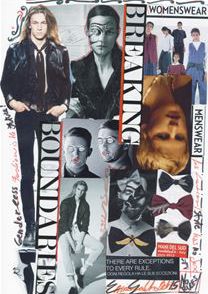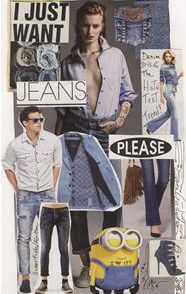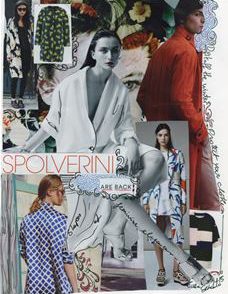Over the past few weeks, while all the eyes of
the fashion world were on Milan and its ready-to-wear fashion shows, I thought
about how extremely rich Florence’s fashion history is and the ‘holy communion’
that Florence has with the most beautiful side of Made in Italy-the art,
exquisite craftsmanship, textiles, and boundless creativity.
Fashion experts use the term ‘Renaissance effect’ to
describe the birth of the Italian style as an expression of excellence. And
when you think ‘Renaissance’, you think of Florence, the center of that golden
age. However, to appreciate fully the importance of Florence in Italian textile
history and, more generally, Italian society, we have to look back beyond the
Renaissance, to the Middle Ages. Walking around the main streets in the
historical center you can still see proof of this glorious past. For example,
there are streets that are still named after the ancient textile trade, like
Corso dei Tintori (‘Dyers Avenue’, occupied by the dyers, who had a privileged
position in the wool and silk guilds), or via Calimala, from kalos mallos (‘fine wool’) in Greek.
In the early decades of the twentieth century,
Florence was home to some of the most illustrious names in Italian style. The
Shoemaker of the Stars, Salvatore Ferragamo, considered the pioneer of Made in
Italy, chose Florence as the place to make his remarkable shoes and settled his
headquarters in the beautiful medieval Palazzo Spini Feroni (now home to a
marvelous museum, a must-see for all those who love shoes). Guccio Gucci
founded the famous Gucci brand-with his timeless double G motif-in Florence,
creating accessories so extraordinary that they were dedicated to and named
after very important customers, like the Jackie Kennedy bag that just returned
to the catwalks for spring 2009-in a bigger, more bohemian version.
In the 1950s, the Marchese Emilio Pucci, a member
of a noble Florentine family of the twelfth century (complete with family
portraits by Botticelli), created the look now known as ‘casual elegance’ that
just decades later would become the world-famous market of Italian
ready-to-wear. The Pucci style, with the amazing kaleidoscopic prints and easy
but extremely stylish pieces, represents that perfect balance of sophistication
and joyfulness that is the essence of Italian style.
Among the current manifestations of Florentine fashion
genius is Roberto Cavalli, who reincarnated Italian glamour. His extraordinary
textiles and astonishing patterns are the most contemporary expression of the
illustrious Florentine textile tradition and sensibility for beauty.
If you want to learn more about Florence’s rich
fashion past, visit the Costume Gallery of the Pitti Palace, with clothing and
textiles from the Middle Ages, the Renaissance (pieces of Eleanor of Toledo’s
dress, for example), and original fashions through the centuries, displayed in
rooms decorated with frescos, paintings and chandeliers. The palace itself is
part of Italy’s fashion history: before Milan became the center for fashion
shows, Palazzo Pitti was the official site of Italian fashion shows. From 1952
to the 1970s, businessman Giovanbattista Giorgini held the shows in the famous
Sala Bianca, ‘White Room’.
Now, let’s step out of the past and into the
present. Just outside the Pitti Palace is Pitti Vintage boutique, where the
owner, Graciela, just introduced her new, limited collection of hand-decorated
tees inspired by her little dog silhouette, each with a different pattern.
Contemporary creativity is something that the city of Florence has to offer in
abundance. In fact, the Comune has sponsored a website,
www.florenceartfashion.com, where
you can find all the best of the creativity ‘made in Florence’. Categories
include clothing, accessories, jewelry and perfume. The comprehensive site
(complete with addresses, map and contacts) is also available in English.
The extraordinary journey into contemporary
Florentine fashion will bring you into a magic world populated by prestigious
names of the Italian style as well as young creative brands. The Fondazione
Capucci at Villa Bardini houses the incredible sculpture/dresses of Roberto
Capucci (the challenging walk up Costa San Giorgio is worth it …and there is an
amazing view of the city). Patrizia Pepe is a glamorous Florentine brand. A
piedi nudi nel parco offers edgy elegance. Principe clothes modern dandies.
German designer Saskia Wittmer specializes in made-to-measure shoes. Casa dei
tessuti, run by the amazing brothers Romano and Romolo Romoli, is as much a
museum as a textile store. Angela Caputi’s innovative resin jewelry has been
shown in museums. Moranduzzo is a ‘paradise of beads’. And those are just a few
of the fashion treasures that Florence holds.
In today’s globalized market, it is more important
than ever to look beyond the ads and the hype at the actual value of a product.
What do I mean by ‘value’? It goes beyond the material and the manufacture. It
is a complex cocktail of concept, design, originality, quality of
craftsmanship, and innovation-the very elements that Florence has long contributed
to the world of fashion. Give yourself the pleasure of discovering the Italian
capital of style, a city that grew from a tradition of value.







